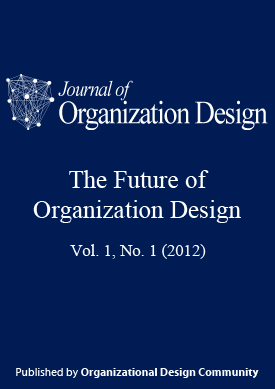Organization Design for Business Ecosystems
DOI:
https://doi.org/10.7146/jod.6334Keywords:
Organization Design, Business EcosystemsAbstract
The modern corporation has long been the central focus of the field of organization design. Such firms can be likened to nation-states: they have boundaries that circumscribe citizen-employees, and they engage in production and trade. But individual corporations are no longer adequate to serve as the primary unit of analysis. Over the years, systems of distributed innovation – so-called business ecosystems – have become increasingly prevalent in many industries (Adner & Kapoor, 2010; Iansiti & Levien, 2004; von Hippel, 1988). Ecosystems generally encompass numerous corporations, individuals, and communities that might be individually autonomous but related through their connection with an underlying, evolving technical system.
In the future, I believe the key problem for organization design will be the management of distributed innovation in such dynamic ecosystems. Specifically, how should diverse entities be integrated into a coherent network that generates goods in the present and new designs for the future? To answer that question, organization designers must think about how to distribute property rights, people, and activities across numerous self-governing enterprises in ways that are advantageous for the group (ecosystem) as well as for the designer’s own firm or community.
Downloads
Published
How to Cite
Issue
Section
License
JOD requires that at least one author of each accepted paper sign a Copyright Transfer Agreement form. Copyright will be transferred to Organizational Design Community when the paper has been accepted.
Articles published in JOD are licensed under a Creative Commons Attribution-NonCommercial-NoDerivs 4.0 Unported License.



